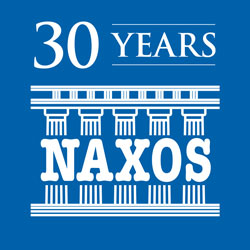Naxos 30th Anniversary Box
HOME
DISCS
ARTISTS
THE ANNIVERSARY COLLECTION
30 CDs to celebrate 30 years
Various Artists
30 CDs to celebrate 30 years
Various Artists
In 2017, Naxos Records celebrates its 30th anniversary. Founded in 1987 by Klaus Heymann, the label now boasts a catalogue of over 9,000 albums spanning every genre of classical music. This limited edition anniversary boxed set comprises thirty CDs spanning the wide range of the label’s repertoire. Featuring releases from 1987 to 2016 and a host of stellar artists, every one of these discs has received critical acclaim and has contributed towards the huge success of Naxos: the world’s largest independent classical record label.

Klaus Heymann
© Emily Chu
© Emily Chu
“Klaus Heymann’s influence on the classical recording business can simply not be overstated. As a leading entrepreneur and musical visionary, Klaus has transformed and reinvented the entire industry. And he has done it his way!
In celebrating Naxos’ 30th anniversary, my hope is that we can all strive to adapt, evolve and reinvent ourselves in the same way that Klaus has done at Naxos. I am proud to be a Naxos artist and extremely grateful to have known Klaus for these many years!”
In celebrating Naxos’ 30th anniversary, my hope is that we can all strive to adapt, evolve and reinvent ourselves in the same way that Klaus has done at Naxos. I am proud to be a Naxos artist and extremely grateful to have known Klaus for these many years!”
– Marin Alsop, Conductor
“This is one of the first recordings by Helmut Müller-Brühl and his Cologne Chamber Orchestra for Naxos, a combination responsible for more than 50 recordings in our catalogue, including many Haydn symphonies, the complete orchestral music of J.S. Bach, and a wide range of other repertoire.”
Klaus Heymann
J.S. Bach’s Overtures or Suites were written over a long period, probably from 1717–1731. In the French style, they consist of an extended overture followed by a series of short movements, mainly in the character of a dance. This is delicate, refined and elegant music containing many of Bach’s most famous melodies, including the section popularly known as Air on the G String.
“Readers who place emphasis more on musicianly performances than period versus modern instruments will find the Cologne version invigorating, graceful and light of tread... If there is a more enjoyable set of its kind available at the moment then I have yet to hear it.”
BBC Music Magazine
BBC Music Magazine
 |
 |
“This is the very first recording with Jenő Jandó (“JJ”), produced by Hungaroton for Naxos, and it led to a relationship that has lasted to this day. JJ is still busy, recording the complete piano music of Bartók. No other Naxos house artist has made more recordings for the label.” Klaus Heymann
Beethoven started his career as a virtuoso pianist at a time when the piano itself was undergoing various changes, evolving from the relatively light instrument known to Mozart into a much more powerful tool. His 32 numbered sonatas (all of which are available from Naxos) were written after he had settled in Vienna, over a period of 25 years. Best known of all is the so-called Moonlight Sonata, with its serene opening movement and stormy finale. It is closely rivalled in popularity by the dramatic Pathétique and the imposing Appassionata Sonatas.
“Jandó’s, clean, direct style and natural spontaneity are particularly admirable in the slow movements of the Pathétique and Appassionata, warmly lyrical in feeling, yet not a whit sentimental.” Penguin Guide
“This is the first recording by our new house cellist, Gabriel Schwabe. In the meantime, he has recorded the Saint-Saëns Cello Concertos.” Klaus Heymann
A period of twenty-one years separates Brahms’ two Cello Sonatas. Suffused with lyricism and expressive ardour, the First has become one of his most popular chamber works. The Second is more sober and succinct than the earlier work, yet strikingly original not least for the wide range required of the cellist to reach unusually high notes from the very low register. Chosen to suit the cello’s particular colour and articulation, the six songs are heard in idiomatic and sensitive arrangements which stay as close as possible to the originals.
“Schwabe plays with a beautifully smooth and sweet tone. In addition, his intonation and finger-to-bow coordination are spot-on. Rimmer is technically solid and secure and makes a strong partner for Schwabe.” Fanfare
“Energetic and teeming with bravura, the contrapuntal strands well delineated—with a clear recording to boot.” The Strad
“Naxos tackled many big symphonic cycles in its early years but we waited for a long time until we found the right conductor for our Bruckner cycle. The results were worth waiting for. No. 5 won the highest critical acclaim among the 11 symphonies.” Klaus Heymann
Anton Bruckner is regarded as one of the greatest symphonic composers of the 19th century, but he wrote his gigantic and heroic Fifth Symphony under difficult circumstances and never heard it performed by an orchestra. Georg Tintner considered this “the most intellectual of all Bruckner’s works”, its contrapuntal intricacy balanced against tactile brass chorales and richly sensual melodies. The great conductor Wilhelm Furtwängler described the Finale as surpassing all others in the symphonic literature. Critic Norman Lebrecht said of this recording that it “sounds as if Tintner had been waiting all of his life to give this performance”.
“This is a Bruckner Fifth with distinctive character and personality... Naxos provides this disc with an extremely wide dynamic range … this is Bruckner that makes complete musical sense... The Royal Scottish Orchestra seems to be unearthing this great work as it plays, and imbues the proceedings with an infectious sense of discovery.” Fanfare
“Idil Biret is another important Naxos house artist. She recorded the complete solo piano music of Chopin, Brahms and Rachmaninov for Naxos and she won special acclaim for her Chopin cycle.” Klaus Heymann
Chopin was a native of Poland, but found his greatest fame in France for his unique qualities as a pianist. His Second Piano Concerto was actually the first to be composed and is reminiscent in style to works by Spohr or Hummel, though with striking themes and novel orchestral effects. The First Piano Concerto was performed by Chopin at his last concert in Warsaw, its slow movement described by him as “like dreaming in beautiful spring-time – by moonlight.” Idil Biret’s award-winning recordings exemplify the simplicity and naturalness that descend from Chopin’s own style of playing.
“The Concertos are impressive accounts, featuring decent accompaniment by Robert Stankovsky and this Ko
š
ice-based ensemble … Biret delivers sensitive, beautifully rendered performances that can stand in the company of the best. Biret is one of the finest pianists before the public today, and one reason for her success is that she is never boring … she will always capture your attention and stir your senses.” Classical Net (on the boxed set, 8.501501)
“An important milestone in our ongoing co-operation with Leonard Slatkin and one of his two main orchestras, this is the first volume in our project to record Copland’s complete orchestral works with Detroit and Leonard.” Klaus Heymann
While Copland’s hugely successful celebration of the American West, Rodeo, has become an American classic, Dance Panels is barely known despite working beautifully as a concert work. Based on popular Mexican melodies, the glittering, even exotic El Salón Mexico is one of Copland’s most frequently performed works. Of his rhythmically complex Danzón Cubano, inspired by a visit to a dance hall in Cuba, in which there were two orchestras playing at both ends, the composer himself wrote: “I did not attempt to reproduce an authentic Cuban sound but felt free to add my own touches of displaced accents and unexpected silent beats.” GRAMMY® Award-winning conductor Leonard Slatkin conducts.
“This is a wonderful program! Leonard Slatkin is a master when it comes to [creating] a real musical atmosphere. Under his baton the five works, magnificently played by the Detroit Symphony, become musical tableaux with a stunning visual force.” Pizzicato ★★★★★
 recording of the year |
 |
 |
 ★ ★ ★ ★ |
“This is not the only recording of Daugherty’s dramatic Metropolis Symphony, but it is the one, played with flourish by the Nashville Symphony, that headlines a GRAMMY® Award-winning disc. The Best Classical Contemporary Composition award went to Daugherty’s searching Deus ex Machina, commissioned by the Nashville Symphony.” Klaus Heymann
Inspired by the fiftieth anniversary of Superman’s first appearance in the comics, Metropolis Symphony has been performed by orchestras all over the world. Hailed by the London Times as a “Symphonie fantastique for our times,” Metropolis Symphony is a musical response to the myth of Superman, expressing the energies, ambiguities, paradoxes, and wit of American popular culture. Deus ex Machina is a piano concerto inspired by trains; of the future and past: Fast Forward re-creates the machine-like rhythms of modern trains; Train of Tears recalls Abraham Lincoln’s funeral train; Night Steam evokes O. Winston Link’s historic photographs of steam locomotives rumbling and whistling their way into extinction.
“It’s (Metropolis Symphony) terrifically entertaining…The Nashville Symphony plays with the necessary brilliance, and conductor Giancarlo Guerrero turns in an interpretation just as vivid as its predecessor...” ClassicsToday.com
 |
 |
 |
 |
“This recording represents an example of the work of Peter Breiner, one of the finest orchestrators and arrangers active today. Jun Märkl, acclaimed for his recordings of Debussy’s complete orchestral works with the Lyon orchestra, conducts the Royal Scottish National Orchestra.” Klaus Heymann
Debussy completed his two books of Préludes in 1910 and 1913 respectively, and they contain some of his most visionary and poetic writing for piano. There are evocations of calm seascapes, delicate wind tracery, and snow-covered landscapes. Some moments are steeped in antiquity, such as La cathédrale engloutie, others in expressive portraiture, as in La fille aux cheveux de lin. There is even a cake-walk. The Préludes are performed here in Peter Breiner’s subtle and colouristic orchestrations.
“Breiner’s orchestrations…take Debussy seriously and surely are intended as enhancements of the originals; I enjoyed listening to them and do not doubt that many of Fanfare’s readers may feel the same way” Fanfare

“The Dvořák Piano Trios are among the most popular works of the genre and this first volume of the project gained tremendous critical acclaim. All three artists have successful solo careers which shows in their individual contributions.” Klaus Heymann
Dvořák’s four surviving Piano Trios are cornerstones of the repertory. No. 3 was completed early in 1883, shortly after the death of the composer’s mother. Though there are inevitably moments tinged with sadness, as in the poignant third movement, there is also tender lyricism and strong nervous energy. Formed of six dumky (the dumka was in origin a Ukrainian lament), the Dumky Trio is one of Dvořák’s most original and popular works. Offering a seemingly endless variety of mood and texture, each movement incorporates a slow and melancholy section alternating with one which is faster, dance-like and cheerful.
“One can’t argue the results achieved by the Tempest’s players. What immediately grabbed my attention were not just their hair-trigger rhythmic reactions, their technical prowess, their sublimated responsiveness to each other’s phrasing and dynamics, their refulgent tone, and their radiant vibrancy, but also their refreshing take on certain details of interpretation.” Fanfare
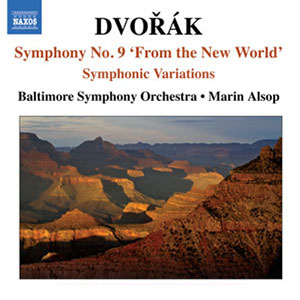

Disc 10
8.570714
Listen to an excerpt from
Symphony No. 9 in E minor, Op. 95
‘From the New World’: II. Largo
Symphony No. 9 in E minor, Op. 95
‘From the New World’: II. Largo
“No single American conductor has had a closer relationship with Naxos than Marin Alsop. Her energy on the podium, her enterprise, and her ability to communicate the music has time and again reaped rewards. After many plaudits for the symphonies of Brahms, she has turned her attention with equal success to those of Dvo
ř
ák. The range of repertoire that she has performed for Naxos is much wider than this suggests, including works by John Adams and Torū
Takemitsu.” Klaus Heymann
This recording by the Baltimore Symphony Orchestra and Music Director Marin Alsop is the first of three discs of Dvo
ř
ák symphonies taken from live performances at Joseph Meyerhoff Symphony Hall. The most popular of all Dvoř
ák’s works, Symphony No. 9 ‘From the New World’ makes an immediate appeal by virtue of a seemingly inexhaustible flow of melody and sparkling orchestration. Based on a melody he had composed earlier for men’s chorus, I am a fiddler, the Symphonic Variations is one of the composer’s most beautifully crafted and beguiling works.
“[Marin Alsop] makes it very much her own, with her fine Baltimore orchestra responding with an account full of warmth, moments of high drama, and, above all, finely paced with a flowing, spontaneous feeling.” Gramophone
“Maria Kliegel was the first major internationally known artist to record for Naxos and she became one of our house artists, recording practically all the important concertos and cello sonatas as well as the complete Beethoven Piano Trios with her Xyrion Trio.” Klaus Heymann
These two Cello Concertos by Antonín Dvo
ř
ák and Sir Edward Elgar represent the summit of romantic achievement in this form. Dvoř
ák’s was his last solo concerto and, filled as it is with deeply felt and highly personal moments, is thought by some to be the greatest ever written for cello. Considered his last significant work, Elgar’s Cello Concerto was written just after WWI and is much loved for its autumnal contemplative poignancy, a contemporary critic admiring the “profound wisdom and beauty underlying its simplicity”. Mstislav Rostropovich described Maria Kliegel as “the best cellist I have heard since Jacqueline du Pré”.
“The technical accomplishment of Kliegel’s playing is balanced by a richness of musical insight that won’t disappoint.” Gramophone
“Maria Kliegel, has a beautiful sonorous tone, plays with expressive verve, technically masterfully” Gramorevue (Czech Republic)
“James Judd and the New Zealand Symphony have been responsible for a large number of Naxos recordings, many featuring English music. No music could be more English than the Elgar Marches in a recording that has garnered much critical acclaim.” Klaus Heymann
The marches that Elgar wrote, whether for public occasions or as an incidental part of other works, represent only one aspect of his achievement as a composer. If not necessarily the most important of his orchestral works, they often represent music of profound achievement, by no means jingoistic or merely brash in conception. The ever-popular Pomp and Circumstance Marches demonstrate a consummate command of orchestration, with the March No. 1 in D major, in Elgar’s own words ‘a tune that will knock ’em flat’, justifiably famous as the melody for Land of Hope and Glory.
“The New Zealand Symphony continues to improve with each new Naxos release. Here their playing is truly world class, especially the shimmering strings and joyous woodwinds. The recording is bright and clear” American Record Guide
 |
 |
 |
“JoAnn Falletta and her Buffalo Philharmonic have recorded a wide range of repertoire for Naxos. This spectacular recording of Glière’s most important symphony has received more critical acclaim than any other recording by this team, who have also won several Grammys® for their recording of works by John Corigliano.” Klaus Heymann
Glière’s Symphony No. 3 is a towering masterpiece, surprisingly rarely performed in concert. Written in 1911, the work is a prime example of Glière’s lifelong penchant to compose music on national themes based on mythology and popular lore. Symphony No. 3 offers a suite of four picturesque tone-poems inspired by the adventures of Il’ya Muromets, the legendary warrior from the Middle Ages of Mother Russia. JoAnn Falletta said the following of the work during recording: “The work is a cathedral in sound that unfolds in breathtaking swashes of colour, poetry and monumental climaxes.”
“This interpretation is the real thing; the energy, enthusiasm, and grandeur of Falletta’s reading are graphic evidence of her love of this music.” American Record Guide
want list |
orchestral choice |
 |
recording of the year |
 |
“This is the best-selling of many Naxos recordings with the Polish National Radio Symphony and Antoni Wit. With the PNRSO and subsequently with the Warsaw Philharmonic, Antoni focused much of his work on Polish composers, including the complete orchestral works of Lutosławski and Szymanowski, plus most of Penderecki’s orchestral works. But he also has contributed rarities such as the overtures of Moniuszko and orchestral works by Karlowicz, together with critically acclaimed recordings of Mahler’s Symphony No. 8 and Schumann’s Scenes from Faust.” Klaus Heymann
Each movement from Górecki’s Symphony No. 3, written in 1976, explores the themes of motherhood and separation and features a solo soprano singing Polish texts. The outer movements are written from the perspective of a parent who has lost a child; the first, a fifteenth-century Polish lament of Mary, mother of Jesus, and the third a Silesian folk song of a mother searching for her son who was killed by the Germans in the Silesian uprisings. The central movement sets the anguished words found scratched on a wall by a teenage girl, when she was imprisoned in the Gestapo headquarters in the Polish town of Zakopane in 1944.
“In the [symphony’s] closing section, with its hint of a gentle but remorseless tolling bell, Wit achieves a mood of simple serenity, even forgiveness... All in all, this seems in many ways a ‘best buy’.” Penguin Guide
“Bjarte Engeset’s main contribution to the Naxos catalogue is his recording of Grieg’s complete orchestral works including incidental music. This recording presents the composer’s most popular orchestral works, the two Suites from the incidental music to Peer Gynt.” Klaus Heymann
Grieg’s incidental music to Henrik Ibsen’s play Peer Gynt is greatly loved by many and is generally considered to be one of the foremost expressions of ‘Norwegian national identity’. Comprising the ‘best’ and most popular numbers, Suite No. 1 was an immediate success. Of Grieg’s 180 or so songs, many of which owe their inspiration to the composer’s wife, Nina, the yearning Solveig’s Song (track 11) is the most often performed. With Den Bergtekne (The Mountain Thrall), the longest of Grieg’s orchestral songs, we enter the realm of the troll forests, ruled by dangerous supernatural powers.
“These performances of the two canonical Peer Gynt Suites are gorgeous, perfectly paced, and thrillingly recorded. I particularly enjoyed Engeset’s ability to keep the melody clearly audible at the big climax of In the Hall of the Mountain King, without any loss of frenzy.” ClassicsToday.com

“Kevin Mallon and his Aradia Ensemble recorded a wide range of Baroque orchestral music for Naxos and this popular coupling of Handel’s orchestral Suites is their best-selling title. Kevin also contributed repertoire from the Classical period with his Toronto Chamber Orchestra and other formations.” Klaus Heymann
Brimming with exhilarating dance tunes and colourful sonorities, Handel’s Water Music and Music for the Royal Fireworks are his two most popular orchestral works. They were composed, respectively, for royal water parties on the River Thames in August 1715 and July 1717, and to celebrate the Peace of Aix-la-Chapelle in 1749, with a fireworks display in Green Park, London. While the July 1717 entertainment was an unqualified success – the King “caused it to be plaid three times in going and returning” – the Royal Fireworks of 1749 was “ill-conducted” and a pyrotechnic disaster, with one of the pavilions catching fire! This is the first recording of Music for the Royal Fireworks to include a transverse flute, as indicated in the original manuscript. It is used to especially beautiful effect in La Paix (track 20).
“Mallon’s performance is exemplary... Brightness and subtlety co-exist with a charismatic swagger.” Gramophone
 |
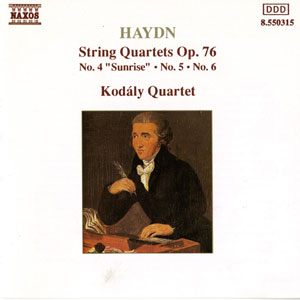

Disc 17
8.550315
Listen to an excerpt from String Quartet No. 63 in B-flat major,
Op. 76, No. 4, Hob.III:78 ‘Sunrise’
Op. 76, No. 4, Hob.III:78 ‘Sunrise’
“The very first Naxos recording to receive critical acclaim in the UK and to be listed in the Penguin Guide. The quartet went on to record all the Haydn Quartets, and later all the Beethoven and Schubert Quartets, and became one of the bestselling chamber music ensembles ever.” Klaus Heymann
Haydn’s achievement as a composer of quartets, both in quality and quantity, is astonishing. The Op. 76 set is amongst the last he wrote and these products of his maturity reveal all his masterly command of technique and font of inventiveness, from the rich depth of the Quartet No. 4 in B flat major to the remarkably structured Quartet No. 6 in E flat major.
“Their playing brings a joyful pleasure in Haydn’s inspiration and there is not the slightest suspicion of over-rehearsal or of routine: every bar of the music springs to life spontaneously, and these musicians’ insights bring an ideal combination of authority and warmth, emotional balance and structural awareness.” Penguin Guide
“This was our first concerto recording with the Uzbek pianist Eldar Nebolsin, winner of the 11th Santander and inaugural Richter competitions. His recording of the Chopin Concertos was included by Gramophone in its list of the 50 greatest Chopin recordings ever. In this recording he is partnered by the Royal Liverpool Philharmonic under Vasily Petrenko, who subsequently came to international fame through his Naxos recordings of the complete Shostakovich Symphonies.” Klaus Heymann
Franz Liszt’s two piano concertos amply display both his extraordinary pianistic ability and his originality as an influential Romantic composer. The first, premièred in Weimar in 1855 with Berlioz conducting, is a path-breaking tour de force whose four movements, played without break and thematically linked, moved Bartók to acclaim it as “the first perfect realisation of cyclic sonata form”. The second, equally brilliant but more integrated, exemplifies Liszt’s belief that “New wine demands new bottles”. The Totentanz (Dance of Death), perhaps inspired by an Italian fresco, is a powerful series of variations on the Medieval Dies irae chant.
“Nebolsin, winner of the first Sviatoslav Richter International Piano Competition in 2005, is a virtuoso of power and poetry. While allowing the music to breathe, he plays in long paragraphs without, as it were, having to come up for air.” Gramophone
“Patrick Gallois now works for Naxos both as a flautist and a conductor. This is his bestselling recording of the Mozart Flute Concertos, which also received universal critical acclaim.” Klaus Heymann
On his European tour of 1777-78, the young Mozart sought to escape the restrictions and limitations of his position in Salzburg and seek his fortune. Along the way various amateur players and rich patrons commissioned works, among them the two Flute Concertos and the Concerto for Flute and Harp. Although written for amateur players, these works are no less challenging for the soloists or enjoyable for the listener. They include many examples of the characteristically rich melodies and daring harmonies that were later to immortalise Mozart’s greatest music.
“The finest recording of Mozart’s flute concertos … It has everything: a first rate soloist, a marvelous orchestra obviously mindful of period practice but playing modern instruments, an intelligently added harpsichord continuo (especially wonderful as a foil to the timbre of the harp), and boundless enthusiasm from all concerned.” ClassicsToday.com
 |
 |
“Norwegian Henning Kraggerud is one of three Naxos house violinists. This recording of Nordic violin lollipops attracted a great deal of extremely positive reviews. Naxos continues to work with Henning, his most recent release coupling the Nielsen Violin Concerto with the newly discovered Halvorsen Concerto.” Klaus Heymann
There was a particularly rich vein of Nordic writing for the violin between the years 1910 and 1930. In this recital Henning Kraggerud, an exemplary stylist lauded for his Sibelius and Sinding concerto disc on Naxos 8.557266 (‘Kraggerud’s performance is superb throughout’ – ClassicsToday.com), explores this memorable repertoire. It ranges from Halvorsen’s folk-flecked Norwegian Dance to Stenhammar’s passionate Sentimental Romances. Late Romanticism floods Sinding’s Abendstimmung whilst Sibelius’s Six Humoresques remain a masterpiece of the genre. The earlier works of Ole Bull illustrate the brilliance and panache of ‘The Nordic Paganini’.
“It is a pleasure to discover [these works] especially given the unaffected warmth of Henning Kraggerud’s playing, ably supported by Bjarte Engeset and the Swedish orchestra … Kraggerud is a major talent, with a rich, beautiful sound, and he deserves to be more widely known. Any violin fancier should enjoy this CD very much.” Fanfare
recording of the year |
“This was our first Rachmaninov recording with Naxos star pianist Boris Giltburg. The artist received superb reviews for this album and it is one of our more recent best-selling recordings. In the meantime, he has recorded more Rachmaninov for us, including two of the Concertos.” Klaus Heymann
Pianist Boris Giltburg sees Rachmaninov’s Études-tableaux, Op. 39 as cinematic short stories or colourful tone paintings. In contrast, the unashamedly beautiful Moments musicaux are concentrated explorations of a single idea or mood, from struggle and pain towards light and genuine joy. In these collections, which contain some of the composer’s most affecting music, Rachmaninov shows himself to be a master of the meticulously crafted short-form genre.
“[Boris Giltburg’s] originality stems from a convergence of heart and mind, served by immaculate technique and motivated by a deep and abiding love for one of the 20th century’s greatest composer-pianists.” Gramophone
Recording of the month |
instrumental choice |
critic's choice |
 10 CLASSICAL ALBUMS THAT SAVED 2016 |
★★★★★ |
“Gerard Schwarz and his Seattle Symphony have recorded more orchestral repertoire for Naxos than any other conductor/orchestra combination. This is one of his highly acclaimed recordings of orchestral works by Rimsky-Korsakov.” Klaus Heymann
Rimsky-Korsakov’s orchestral genius shines through in his colourful operatic suites, and that from his final opera Le Coq d’or is richly dramatic and expressive. The complicated folk-based story of the Snow Maiden is simplified into four enchanting movements, and that of Sadko into a single, radiantly descriptive tone-poem. The thrilling legend of Mlada is represented by vivid dances and a final Cortège. Gerard Schwarz’s recording of Rimsky-Korsakov’s Sheherazade (8.572693) with the Seattle Symphony was described as ‘absolutely terrific’. (ClassicsToday.com)
“Schwarz’s guiding hand gives the music a strong and coherent shape. The Seattle players are excellent, with a confident horn section that has plenty to rejoice in … the excerpts are more substantial, and are not only vividly presented but well-shaped.” Gramophone
“Our very first recording with Norbert Kraft, one of the finest guitarists of his generation. He went on to record most of the standard guitar repertoire for the label and continues to be associated with Naxos as a producer of more than 100 guitar recordings.” Klaus Heymann
Since its first performance in 1940, the Concierto de Aranjuez has remained probably the most popular concerto written in the 20th century for any instrument, thanks largely to the inspired, quintessentially Spanish melody of its slow movement. The title refers to the palace of the Bourbon kings, some 45 miles south of Madrid, but Rodrigo said that he was more interested in capturing the mood of 18th century Spain than the palace itself. The Italian Mario Castelnuovo-Tedesco’s Guitar Concerto No. 1 of 1939, together with Brazilian Heitor Villa-Lobos’ sole example of 1951, completes a recording of perhaps the three finest guitar concertos of all time.
“Canadian Norbert Kraft is an excellent guitarist and the fine recording captures his flawless performance. Add to that the wonderful support of the Northern Chamber Orchestra, which is perfectly balanced with the soloist, and you have a first rate disc.” concierto il divo

“When Naxos started to record standard opera repertoire, most pundits thought it was an impossible undertaking. However, many of the recordings achieved substantial critical acclaim and none more than this Barber of Seville which ranks among the finest versions of this Rossini opera ever recorded.” Klaus Heymann
Rossini’s immortal comic masterpiece was based on Pierre-Augustin Beaumarchais’s French play Le Barbier de Séville and composed at incredible speed. The ultimate opera buffa, its score is a compendium of the composer’s wittiest and most brilliant writing, including the famous entrance aria Largo al factotum and a raft of superbly dynamic ensembles. On its release this recording gained universal acclaim.
“The result is a meticulously produced, often very funny, brilliantly integrated performance that you will almost certainly find yourself listening to as a stage play – rather than an opera with eminently missable (often arbitrarily abbreviated) recitatives. Il barbiere is an ensemble piece distinguished, as Verdi observed, by the distinctive quality of its musical declamation. Humburg re-establishes these points in a quite remarkable way.”
Gramophone (on full recording, 8.660027-29)
Gramophone (on full recording, 8.660027-29)
 want list |
“Tianwa Yang was discovered by Naxos house violinist Takako Nishizaki. Tianwa’s teacher had sent her a recording of the Paganini Caprices which she had made at the age of 13 and Takako immediately recognised the enormous potential of this young Chinese violinist. Tianwa’s very first recording of works for violin and piano by the great Spanish violinist-composer Pablo Sarasate garnered unprecedented critical acclaim and we decided to record all his works with her. The eight-CD set eventually won the German Record Critics Prize and Tianwa has become one of the leading violinists of her generation.” Klaus Heymann
Dazzlingly virtuosic fireworks, spirited passion and astonishing technique combine in the youthful Chinese violinist Tianwa Yang, who leaves the critics grasping for superlatives whenever she plays. In this second volume of Naxos’s cycle of Sarasate’s complete works for violin and orchestra she again teams with the orchestra founded by the legendary Spanish violinist-composer in 1879 to present two of his orchestral masterpieces, the famous Carmen Fantasy and the sadly neglected Romeo and Juliet Fantasy, as well as several other utterly delightful, and fiendishly difficult, concert pieces.
“Yang proves herself to be an absolute master of her craft... Rarely are the lofty technical demands of the “Carmen” Fantasy tossed off with such apparent ease and effortlessness. Yang plays with superbly accurate intonation, flawless shifts, and meticulous articulation.”
Allmusic.com ★★★★★
Allmusic.com ★★★★★
 |
 |
 |
“Here Naxos house conductor Antoni Wit conducts the Warsaw Philharmonic Chorus and Orchestra in works by Szymanowski. He recorded all the composer’s orchestral and choral-orchestral works with the same forces. This became one of the most highly acclaimed cycles in the Naxos catalogue.” Klaus Heymann
Karol Szymanowski’s Stabat Mater, set to a Polish translation of the medieval poem, makes extensive use of traditional Polish musical ideas. His setting of the Veni Creator was composed for the opening of the Warsaw Academy of Music, of which he was the first rector. The Litany for the Virgin Mary is a more meditative work, yet rises at times to a level of rhapsodic intensity. All the choral works on this recording are as firmly embedded in Christian musical tradition as they are recognisably of their period.
“Antoni Wit and his players undoubtedly have the measure of this music, but it is the singing of the soprano Iwona Hossa that lends this disc its special distinction … superb value.”
BBC Music Magazine ★★★★★
BBC Music Magazine ★★★★★
 |
awards finalist |
“Naxos owes much of the early critical acclaim for the label in the UK to the Early Music recordings by the Oxford Camerata led by Jeremy Summerly. This is their most successful recording and was awarded the first 4-Star rating with a Rosette by the Penguin Guide. The group recorded more than 30 albums for Naxos over the years.” Klaus Heymann
Along with his pupil William Byrd, Thomas Tallis was the finest composer of the English Renaissance. This recording, released to celebrate the 500th anniversary of Tallis’ birth, features his largest compositions for the church. The motet Salve intemerata, written when Tallis was a young man, is one of the longest single movements of the entire sixteenth century. Scored for forty independent voices, Spem in alium, a work of Tallis’ maturity, dwarfs any other English work of the period. Symphonic in its proportions and conception, it is Tallis’ greatest masterpiece.
“This was one of the most remarkable recording of 2005 and fully worthy of the celebration of the 500th anniversary of Tallis’ birth…The performances here are beyond praise, as is the skill of the Naxos recording team, while the acoustic of All Hallows, Gospel Oak, London, was ideally chosen for this remarkable enterprise.” Penguin Guide
 |
“This was our first recording with the Royal Liverpool Philharmonic and Vasily Petrenko. It won a Gramophone Orchestral Award and received universal critical acclaim as one of the best versions of the symphony ever. Based on the success of this recording we embarked on the project to record the complete Shostakovich symphonies which met with the same positive reception as the Tchaikovsky Manfred.” Klaus Heymann
Written between the fourth and fifth symphonies, Tchaikovsky’s programmatic Manfred Symphony, inspired by Byron’s dramatic poem of the same name, contains some of the composer’s most thrillingly orchestrated music and best tunes. For Tchaikovsky, as for Byron, Manfred represented the figure of the outsider, an outcast from society. The story of the Symphonic Ballad Voyevoda concerns a provincial governor, who surprises his wife in infidelity and bids his servant shoot her. In error, however, he shoots his master instead.
“[Vasily Petrenko] has transformed the playing of the Royal Liverpool Philharmonic who obviously greatly enjoy playing for him. His splendid new version of Tchaikovsky’s Manfred was rightly chosen as Orchestral Record of the Year. It is thrilling and finally establishes the symphony as a masterpiece.” Gramophone
ORCHESTRAL AWARD |
HOLIDAY CRITICS'
CHOICE |
CRITIC'S CHOICE |
“Ilya Kaler is another important artist in the Naxos catalogue. Winner of three important competitions in the same year, he was also discovered by Naxos violinist Takako Nishizaki who immediately recognised the combination of technical perfection, musical expression and good taste in the artist when she first heard him play. Ilya subsequently recorded other concertos and still works with the label with his Tempest Trio.” Klaus Heymann
Tchaikovsky’s breathtaking Violin Concerto, with its song-like solo part, winning melodies and brilliant orchestration, has become one of the most popular of all concertos in the standard repertoire. It is coupled here with three lesser-known gems: the Sérénade mélancolique, by turns sombre and tender in feeling, the captivating Valse-Scherzo and Glazunov’s orchestration of the Souvenir d’un lieu cher.
“[Kaler’s] approach is fresh, clean and direct, by no means unfeeling, with flawless intonation and fine shading of dynamic.” Gramophone
“Violinist Ilya Kaler plays with excitement and conviction, fire and soul, which are sometimes missing in a work that requires a good deal of Russian passion.” Classical Candor
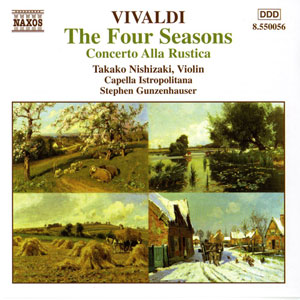

Disc 30
8.550056
Listen to an excerpt from Violin Concerto in F minor, Op. 8, No. 4, RV 297 ‘Winter’
“This is the bestselling of all Naxos recordings. The recording was produced in one very long day. The last session ended just before the orchestra musicians had to leave to catch the last train. This was the first ever recording by the artist for Naxos and features the great little Capella Istropolitana from Bratislava, one of the great success stories of the early days of Naxos. Takako went on to record most of the standard concertos and big chunks of the sonata repertoire and remains one of the two bestselling Naxos artists, together with her sonata partner Jenő Jandó.” Klaus Heymann
With its irresistible combination of elegance, good tunes and driving energy, it is not surprising that snatches from The Four Seasons are instantly recognisable from their wide commercial use. But there is more to Vivaldi’s Four Seasons than that. The music is packed with vivid aural detail: listen out for birds singing, a dog barking and peasants bagpiping in Spring; thunder and the buzzing of flies in Summer; tipsy peasants dancing and a hunt in Autumn; and in Winter watch out for chattering teeth, stamping feet and children slipping and falling on the ice.
“Nishizaki and Gunzenhauser deliver straightforward, impressively virtuosic performances of the concertos.” Allmusic.com
“Takako Nishizaki plays beautifully, displaying an appropriate degree of bravura, and the accompaniment under Stephen Gunzenhauser is modest in scale and pleasingly finished.”
Penguin Guide
Penguin Guide
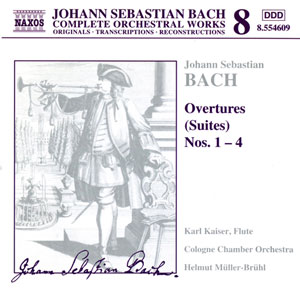
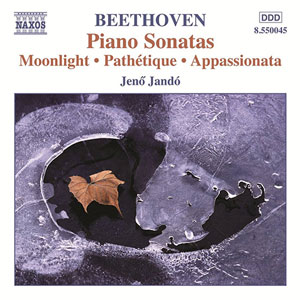
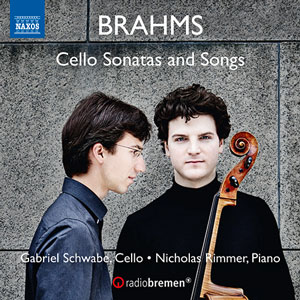
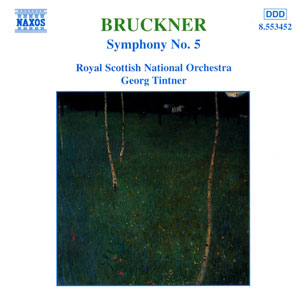
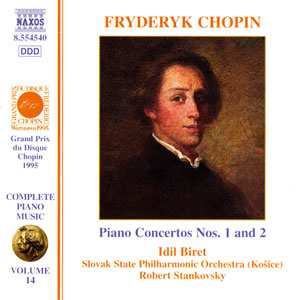
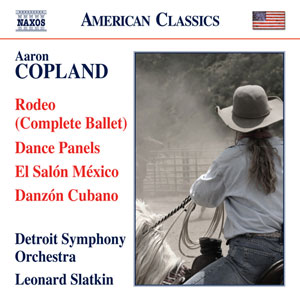
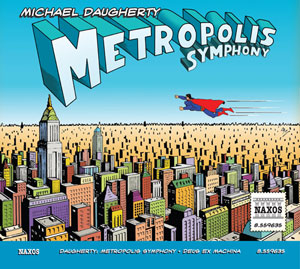
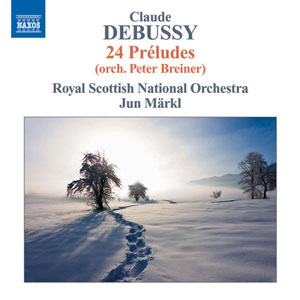
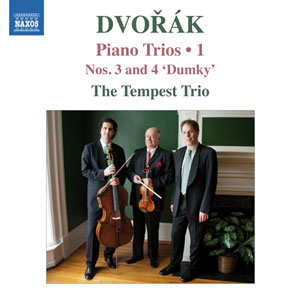

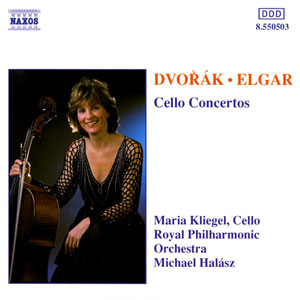
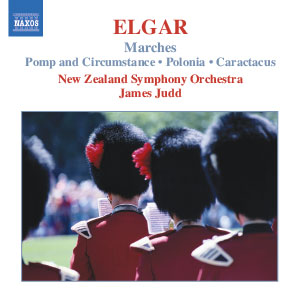
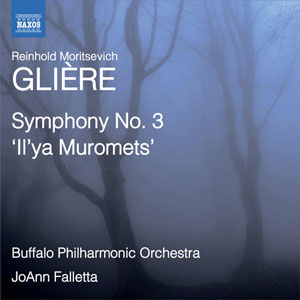
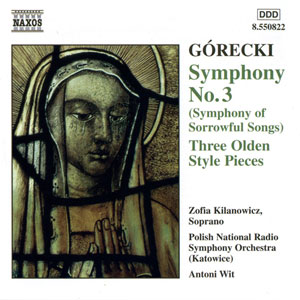
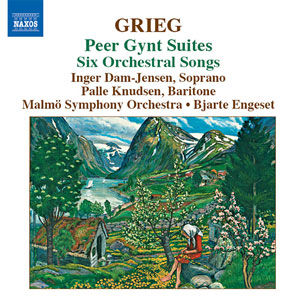
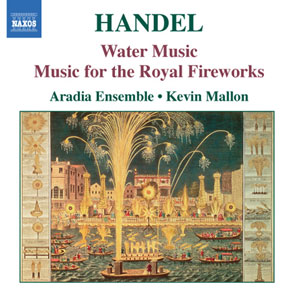

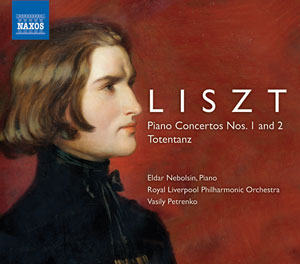
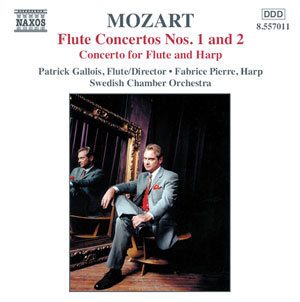
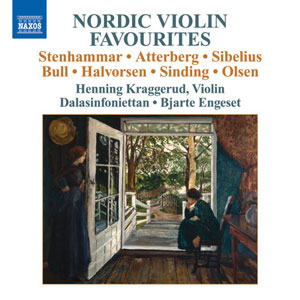
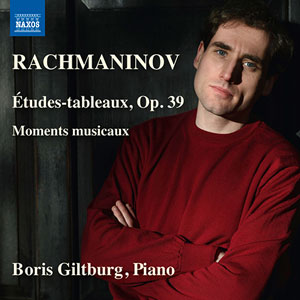
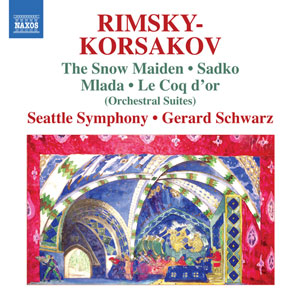
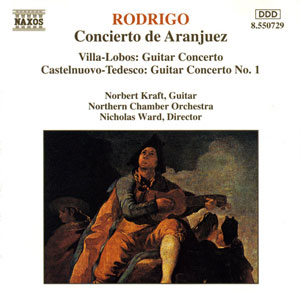
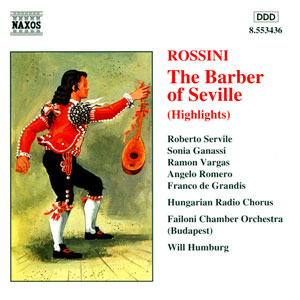
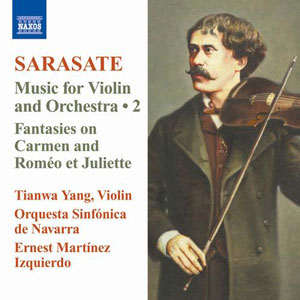
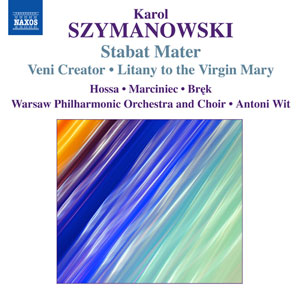
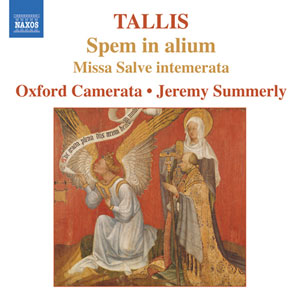
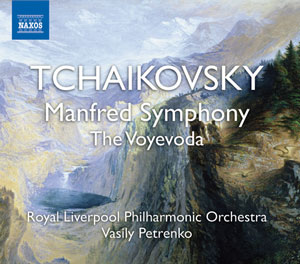
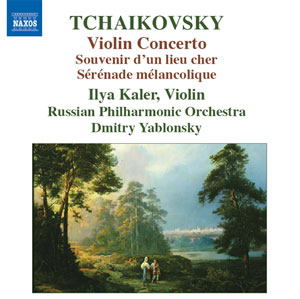

Soloists
Idil Biret • Jarosław Br
Erik Gratton • Iwona Hossa • Jen
Palle Knudsen • Norbert Kraft • Henning Kraggerud • Ewa Marciniec • Eldar Nebolsin • Takako Nishizaki • Fabrice Pierre
Ann Richards • Nicholas Rimmer • Angelo Romero • Gabriel Schwabe • Robert Servile • Roderick Shaw
Mary Kathryn Van Osdale • Ramon Vargas • Terrence Wilson • Tianwa Yang
ę
k • Inger Dam-Jensen • Patrick Gallois • Sonia Ganassi • Boris Giltburg • Franco de GrandisErik Gratton • Iwona Hossa • Jen
ő
Jandó • Karl Kaiser • Ilya Kaler • Ingrid Kertesi • Zofia Kilanowicz • Maria KliegelPalle Knudsen • Norbert Kraft • Henning Kraggerud • Ewa Marciniec • Eldar Nebolsin • Takako Nishizaki • Fabrice Pierre
Ann Richards • Nicholas Rimmer • Angelo Romero • Gabriel Schwabe • Robert Servile • Roderick Shaw
Mary Kathryn Van Osdale • Ramon Vargas • Terrence Wilson • Tianwa Yang
Chamber Ensembles
Kodály Quartet • The Tempest Trio
Vocal Ensembles
Hungarian Radio Chorus • Oxford Camerata • Warsaw Philharmonic Chorus
Orchestras
Aradia Ensemble • Baltimore Symphony Orchestra • Buffalo Philharmonic Orchestra • Capella Istropolitana • Cologne Chamber Orchestra
Dalasinfonietta • Detroit Symphony Orchestra • Failoni Chamber Orchestra, Budapest • Malmö Symphony Orchestra
Nashville Symphony Orchestra • New Zealand Symphony Orchestra • Northern Chamber Orchestra • Orquesta Sinfónica de Navarra
Polish National Radio Symphony Orchestra (Katowice) • Royal Liverpool Philharmonic Orchestra • Royal Philharmonic Orchestra
Royal Scottish National Orchestra • Russian Philharmonic Orchestra • Seattle Symphony Orchestra
Slovak State Philharmonic Orchestra, Ko
Dalasinfonietta • Detroit Symphony Orchestra • Failoni Chamber Orchestra, Budapest • Malmö Symphony Orchestra
Nashville Symphony Orchestra • New Zealand Symphony Orchestra • Northern Chamber Orchestra • Orquesta Sinfónica de Navarra
Polish National Radio Symphony Orchestra (Katowice) • Royal Liverpool Philharmonic Orchestra • Royal Philharmonic Orchestra
Royal Scottish National Orchestra • Russian Philharmonic Orchestra • Seattle Symphony Orchestra
Slovak State Philharmonic Orchestra, Ko
š
ice • Swedish Chamber Orchestra • Warsaw Philharmonic Orchestra
Conductors
Marin Alsop • Katarina Andreasson • Bjarte Engeset • JoAnn Falletta • Giancarlo Guerrero • Stephen Gunzenhauser
Michael Halász • Will Humburg • James Judd • Kevin Mallon • Jun Märkl • Ernest Martínez Izquierdo • Helmut Müller-Brühl
Vasily Petrenko • Gerard Schwarz • Leonard Slatkin • Robert Stankovsky • Jeremy Summerly • Georg Tintner • Nicholas Ward
Antoni Wit • Dmitry Yablonsky
Michael Halász • Will Humburg • James Judd • Kevin Mallon • Jun Märkl • Ernest Martínez Izquierdo • Helmut Müller-Brühl
Vasily Petrenko • Gerard Schwarz • Leonard Slatkin • Robert Stankovsky • Jeremy Summerly • Georg Tintner • Nicholas Ward
Antoni Wit • Dmitry Yablonsky
